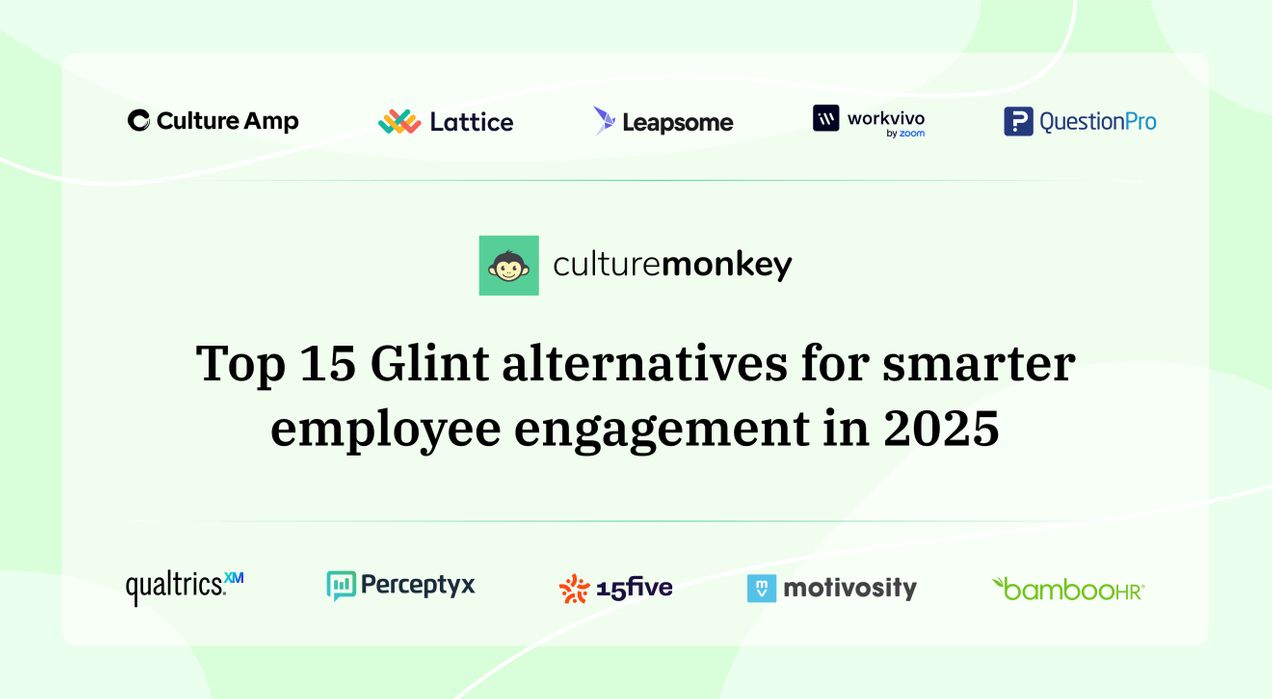Best employee engagement software with Teams integration
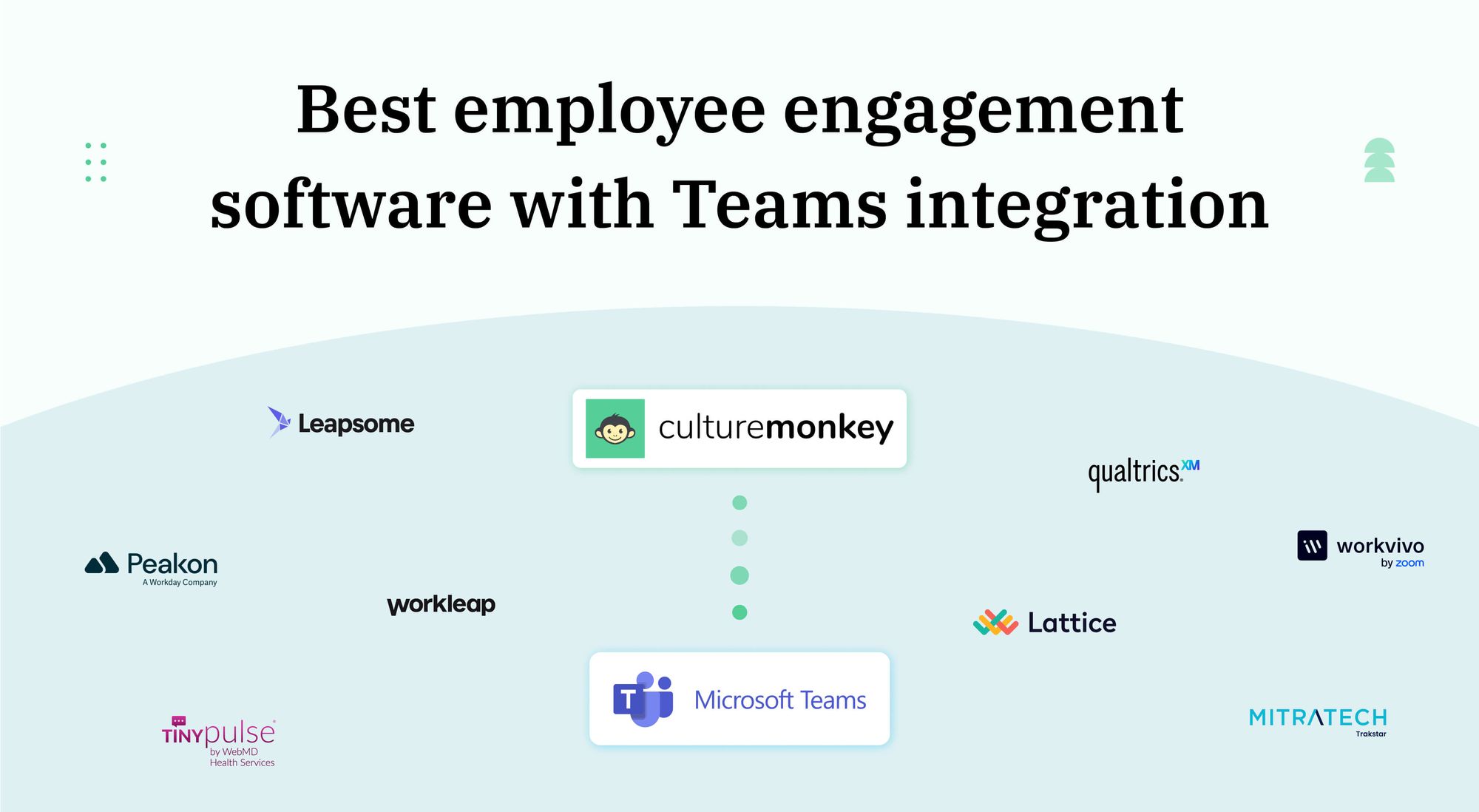
Remember the sound of the ice cream truck rolling into your street as a kid? That faint jingle, barely audible at first, was enough to make you drop everything, grab some change, and race outside. It didn’t matter what you were doing. That sound reached you exactly where you were. And you responded.
That’s the power of smart delivery. In today’s workplace, Microsoft Teams is that street. It’s where your employees are already active, collaborating, and communicating. So if your surveys and feedback tools aren’t showing up there, you’re probably missing your moment.
In this blog, we’ll walk through the best employee engagement software with Microsoft Teams integration, platforms that don’t just send surveys, but deliver them in the right place, at the right time. And when it comes to engagement, CultureMonkey is the one truck that never misses the street.
What is Teams-integrated employee engagement software?
With over 320 million active users worldwide, Microsoft Teams has become the central hub where modern organizations collaborate every day. Teams-integrated employee engagement software connects directly into this environment, allowing HR leaders and managers to run surveys without relying on external links or separate portals.
Surveys can be shared as messages or cards inside chats and channels, making it easier for employees to respond quickly, whether on desktop or mobile. Automated reminders delivered through Teams help improve participation, while anonymity controls ensure employees feel safe sharing honest feedback.
Instead of juggling multiple systems, organizations get higher completion rates and faster feedback loops by using Teams as the delivery channel. The result is a seamless way to listen to employees where they already are, removing friction and boosting engagement.
Best employee engagement tools with Microsoft Teams integration
If you’re evaluating employee engagement software with Teams integration, start with a survey-first platform that delivers high response rates, airtight anonymity, and role-based insights directly inside Teams.
Among Microsoft Teams feedback tools, CultureMonkey leads this list for its native, survey-centric workflows, making it the most effective choice to run employee surveys in Microsoft Teams while driving real, manager-level action.
1. CultureMonkey
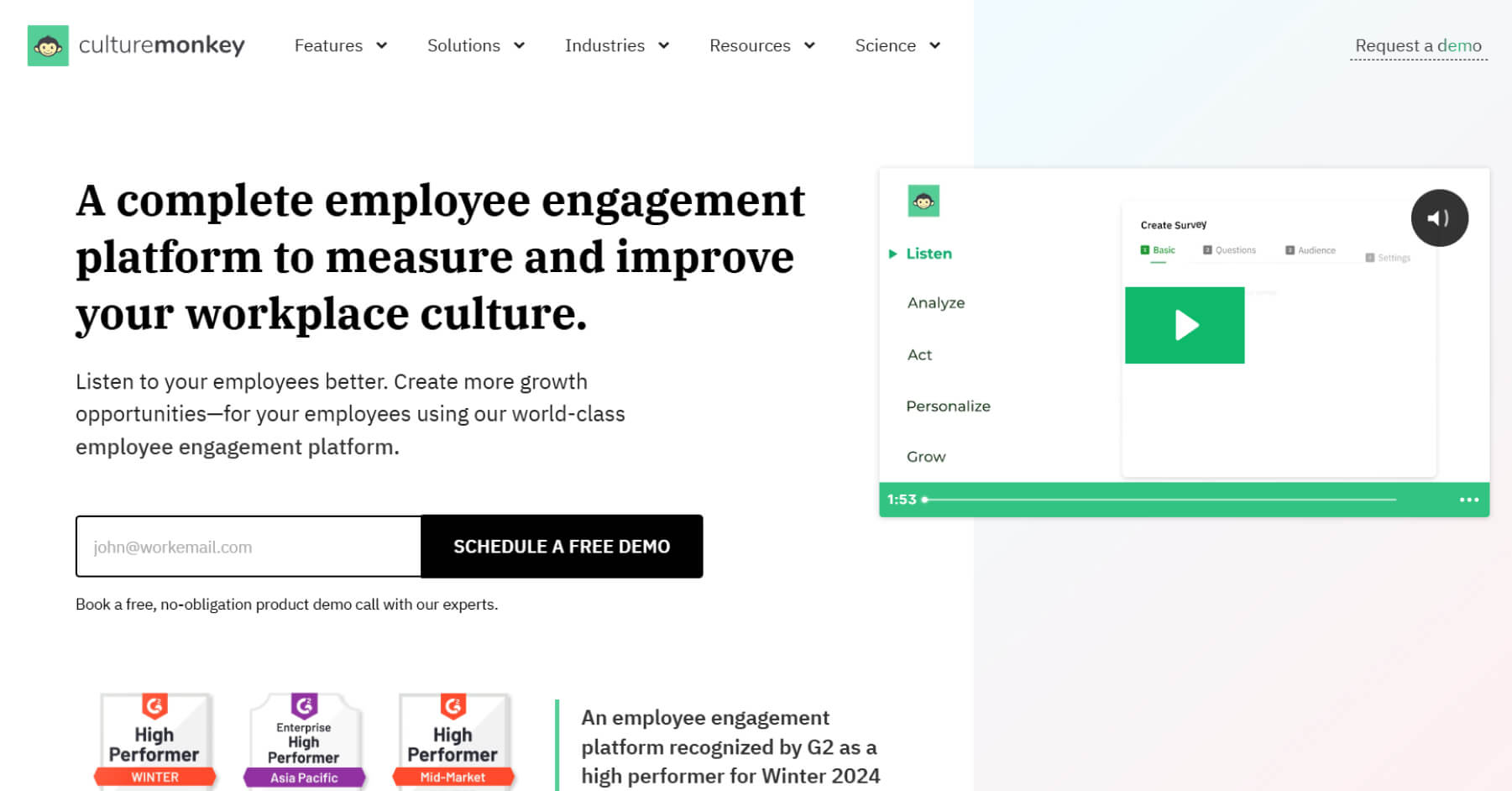
CultureMonkey is an enterprise-grade employee engagement platform built to drive honest feedback and measurable action. With deep Microsoft Teams integration, it delivers survey invites and smart reminders directly where your employees collaborate.
From anonymity safeguards to People Science-backed templates, CultureMonkey is designed to turn feedback into meaningful, real-time insights, without disrupting existing workflows.
| Feature | Advantages |
|---|---|
| Survey delivery in Teams | Share survey links and reminders directly inside Microsoft Teams to improve visibility and response rates. |
| Enterprise-grade security | GDPR and SOC 2 compliant with strong encryption, ensuring data protection and privacy at every level. |
| People Science-led design | Every question and workflow is grounded in behavioral science to improve feedback quality and employee trust. |
| Multilingual survey support | Deliver surveys in 150+ languages to engage distributed teams with localized content and improved participation. |
| Lifecycle feedback automation | Trigger onboarding, exit, anniversary, and promotion surveys automatically to capture timely, contextual insights. |
| Guaranteed anonymity settings | Built-in thresholds and anonymous modes ensure honest feedback while protecting respondent identity. |
| Role-based access control | Define what HR, managers, and leaders can see, ensuring the right people access the right data securely. |
| Real-time participation tracking | Monitor live survey progress, spot drop-offs, and intervene quickly to boost overall response rates. |
| AI-powered sentiment analysis | Understand emotional tone in feedback with sentiment scoring across open-text responses. |
| Manager dashboards with insights | Equip every manager with team-specific insights and action prompts to drive meaningful change. |
| Omnichannel reminder options | Reach employees on Slack, WhatsApp, SMS, email, kiosks, and QR, alongside Teams, for higher engagement. |
Takeaways
| Takeaway | Details |
|---|---|
| Pricing | Contact Sales |
| G2 | 4.7 |
| Capterra | NA |
| Pros | Intuitive platform with strong anonymity features that make it easy for employees to share honest feedback. |
| Cons | No notable drawbacks reported; users find the experience smooth, responsive, and easy to navigate. |
2. Workleap’s Officevibe
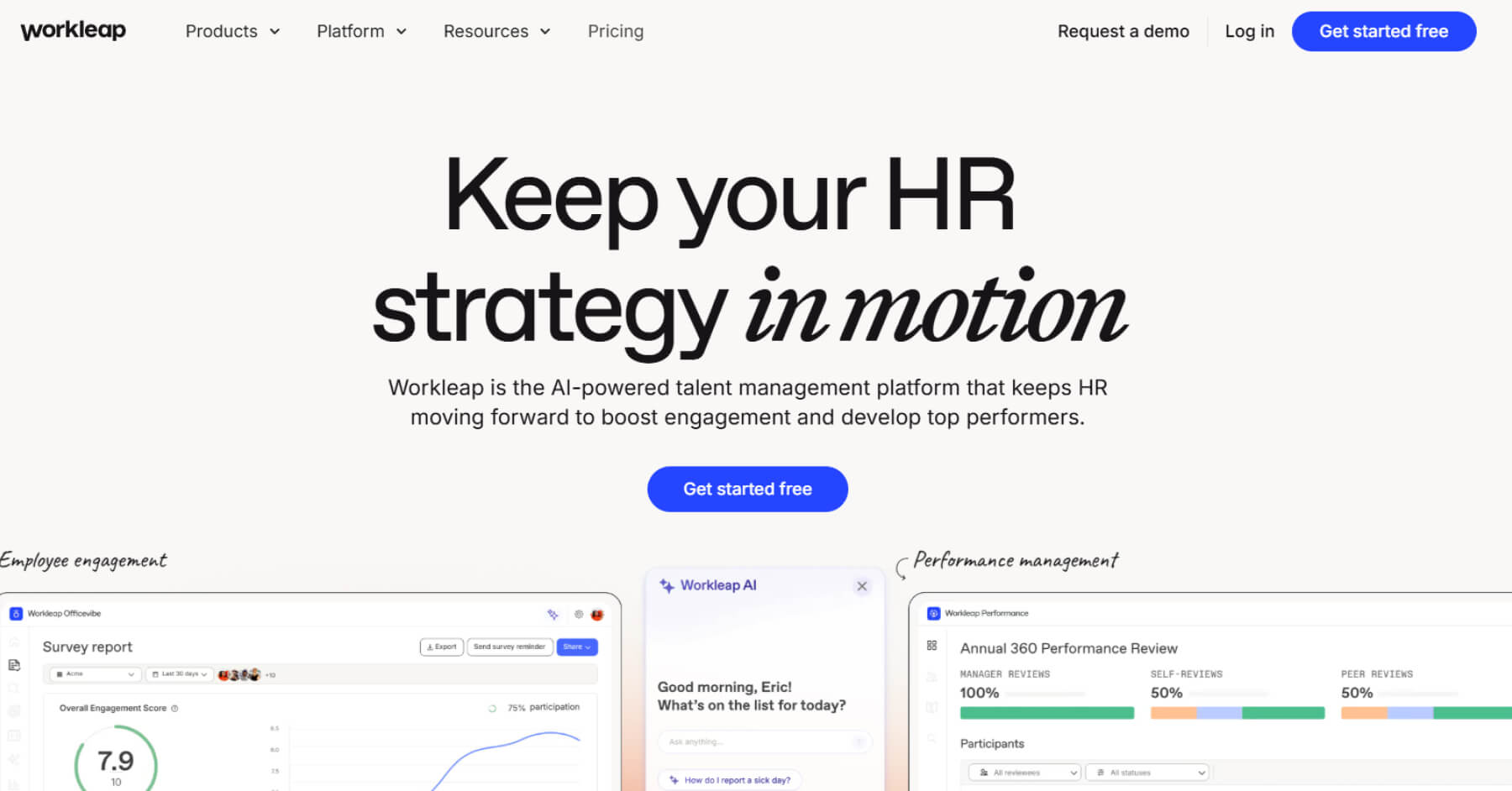
| Feature | Advantages |
|---|---|
| Pulse surveys | Automated pulse surveys with science-backed questions deliver continuous, manager-ready insights and trends. |
| Custom surveys | Build custom surveys or use templates to target topics and collect focused, actionable feedback at scale. |
| eNPS tracking | Track eNPS over time to gauge loyalty and pride, surface trends, and guide actions with clear reporting. |
| Anonymous feedback | Anonymous feedback encourages candor; managers can respond thoughtfully while identities remain protected. |
| Teams survey notifications | Enable Microsoft Teams notifications for survey invites and reminders to boost participation in the flow. |
Takeaways:
| Takeaway | Details |
|---|---|
| Pricing | $5.00/user/mo |
| G2 | 4.7 |
| Capterra | 4.8 |
| Pros | Workleap makes it easy to collect and analyze employee feedback through intuitive survey templates and real-time reporting. |
| Cons | Limited survey customization and integrations; analytics depth could be stronger for advanced teams. |
3. Leapsome
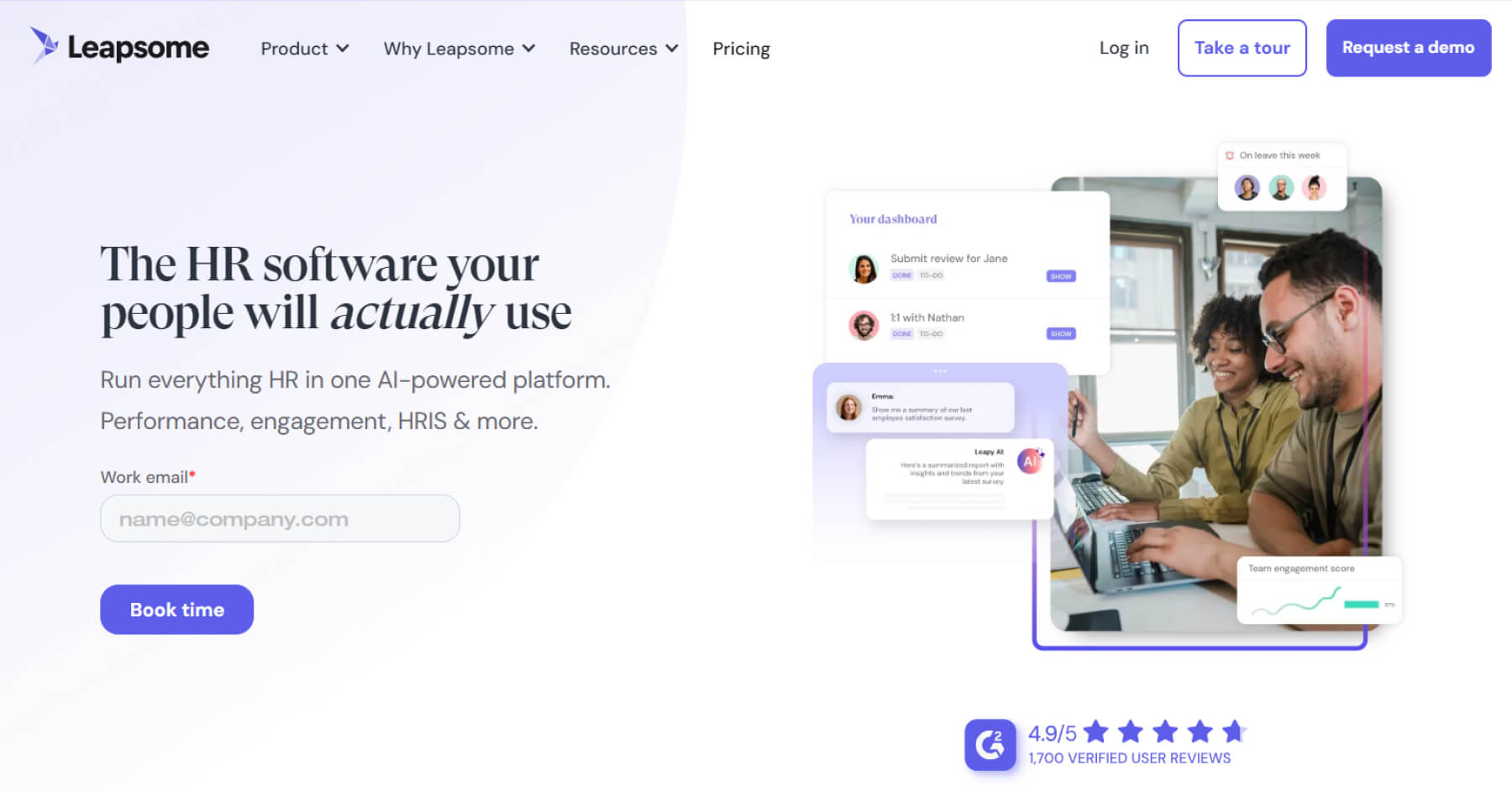
| Feature | Advantages |
|---|---|
| Pulse and eNPS | Measure engagement with quick pulses and eNPS to track loyalty trends and act faster on shifting sentiment. |
| Anonymous by default | Default anonymity with thresholds protects identities and builds trust for honest, high-quality responses. |
| Templates and customization | Use expert templates or build custom questionnaires to target topics and collect focused, comparable data. |
| Scheduling and reminders | Automate survey timing and participant-only reminders to improve completion without spamming respondents. |
| Teams survey notifications | Send survey invites and reminders as Teams notifications to boost response rates in the flow of work. |
Takeaways:
| Takeaway | Details |
|---|---|
| Pricing | Contact sales |
| G2 | 4.8 |
| Capterra | 4.6 |
| Pros | Leapsome’s survey analytics stand out; teams value granular filters, benchmarks, and trend views that accelerate action. |
| Cons | Some organizations note limits with advanced survey logic and branching, creating workarounds for complex designs. |
4. Qualtrics EmployeeXM
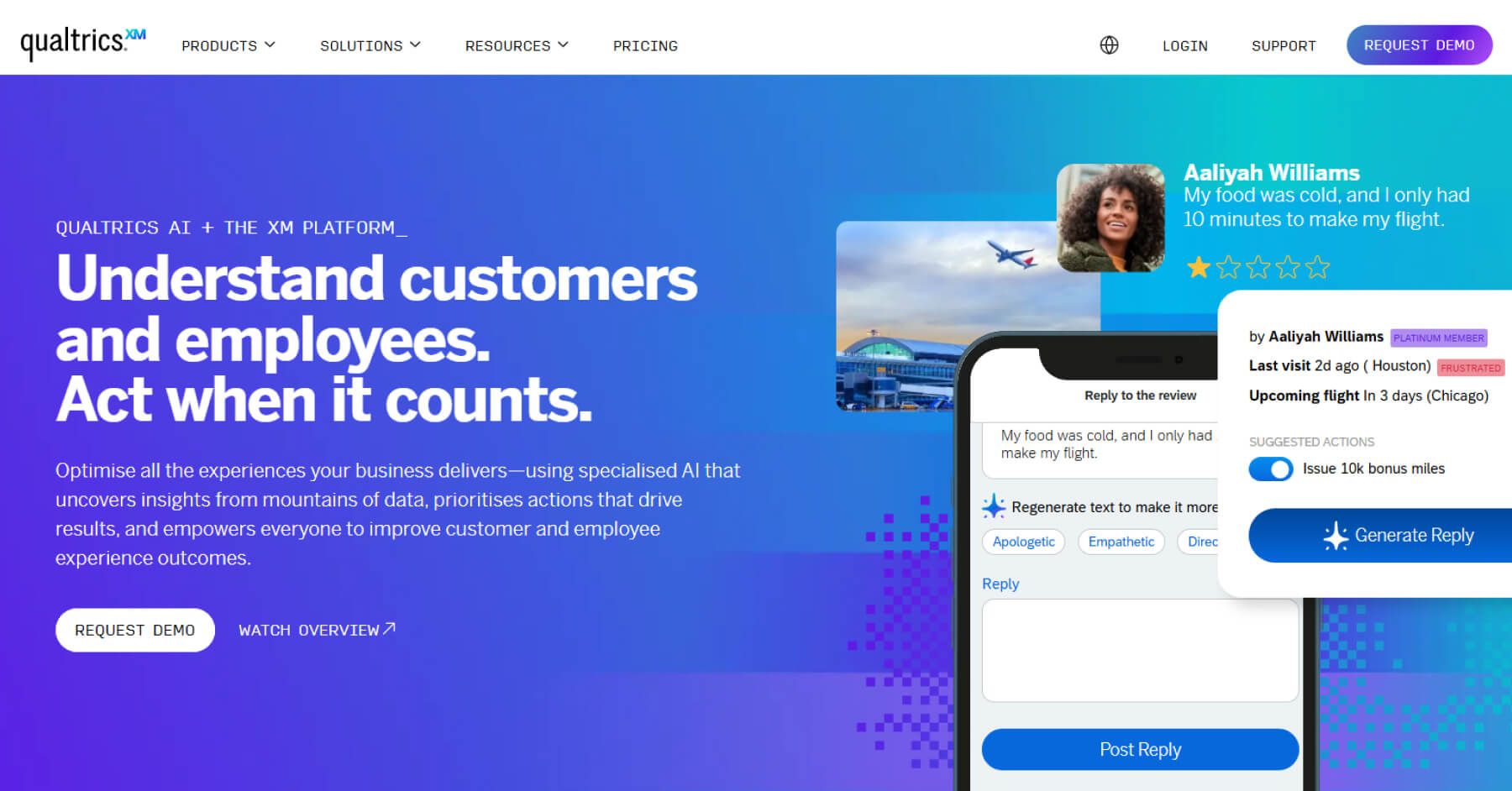
| Feature | Advantages |
|---|---|
| Pulse survey programs | Run recurring pulses with tailored questions and schedules to track trends and drive action across teams. |
| Teams survey distributions | Send personalized EX survey invites directly in Teams to meet employees where they work and boost completion. |
| Anonymity and thresholds | Protect identities with anonymity thresholds while preserving analysis across safe segments and fields. |
| Templates and benchmarks | Use expert templates and EX benchmarks to compare response rates and results by industry, size, and length. |
| Role-based EX dashboards | Give managers role-based insights in real time to pinpoint drivers, prioritize actions, and improve outcomes. |
Takeaways:
| Takeaway | Details |
|---|---|
| Pricing | Contact sales |
| G2 | 4.4 |
| Capterra | NA |
| Pros | Industry benchmarks provide clear context for results and make it easier to interpret trends and set targets. |
| Cons | The platform carries a steep learning curve and a higher price point compared with lighter survey tools. |
5. Peakon
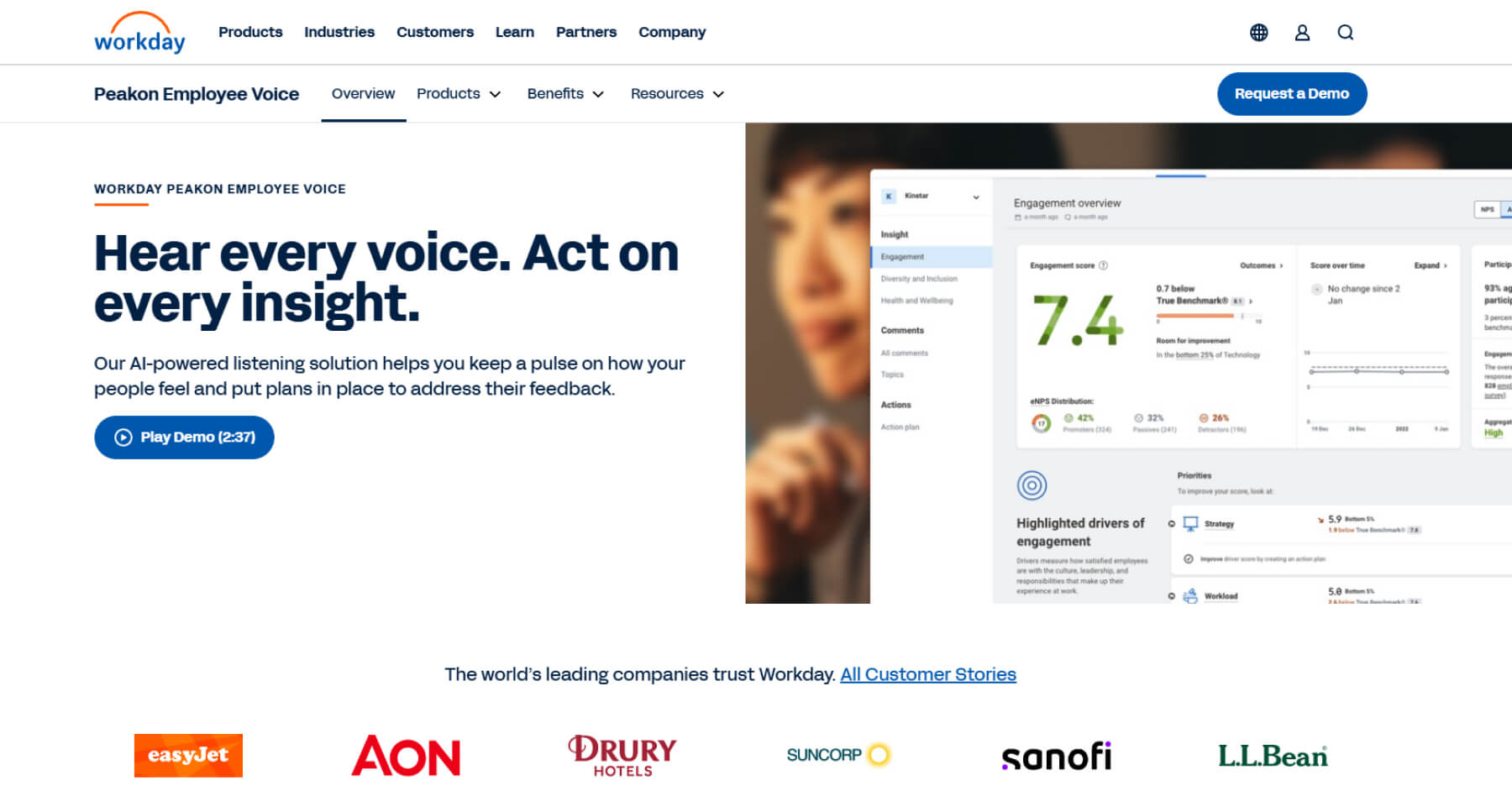
| Feature | Advantages |
|---|---|
| Continuous pulse surveys | Automated pulses track sentiment continuously and surface trends quickly for timely action across teams. |
| Driver-based engagement insights | Model engagement via 14 drivers to pinpoint root causes and guide targeted actions that improve outcomes. |
| Industry benchmarks | Compare results using global industry benchmarks to contextualize scores and prioritize improvements. |
| Anonymity thresholds | Protect identities with confidentiality thresholds so insights stay useful while segments remain safe. |
| Teams survey notifications | Send survey notifications, answer in Teams, and get reminders to boost completion in the flow of work. |
Takeaways:
| Takeaway | Details |
|---|---|
| Pricing | Contact sales |
| G2 | 4.6 |
| Capterra | 4.8 |
| Pros | A broad survey question library ensures comprehensive coverage across engagement themes and sentiment drivers. |
| Cons | Pricing is on the higher side, and raw-data export options can feel limited for deeper analysis. |
6. TINYpulse
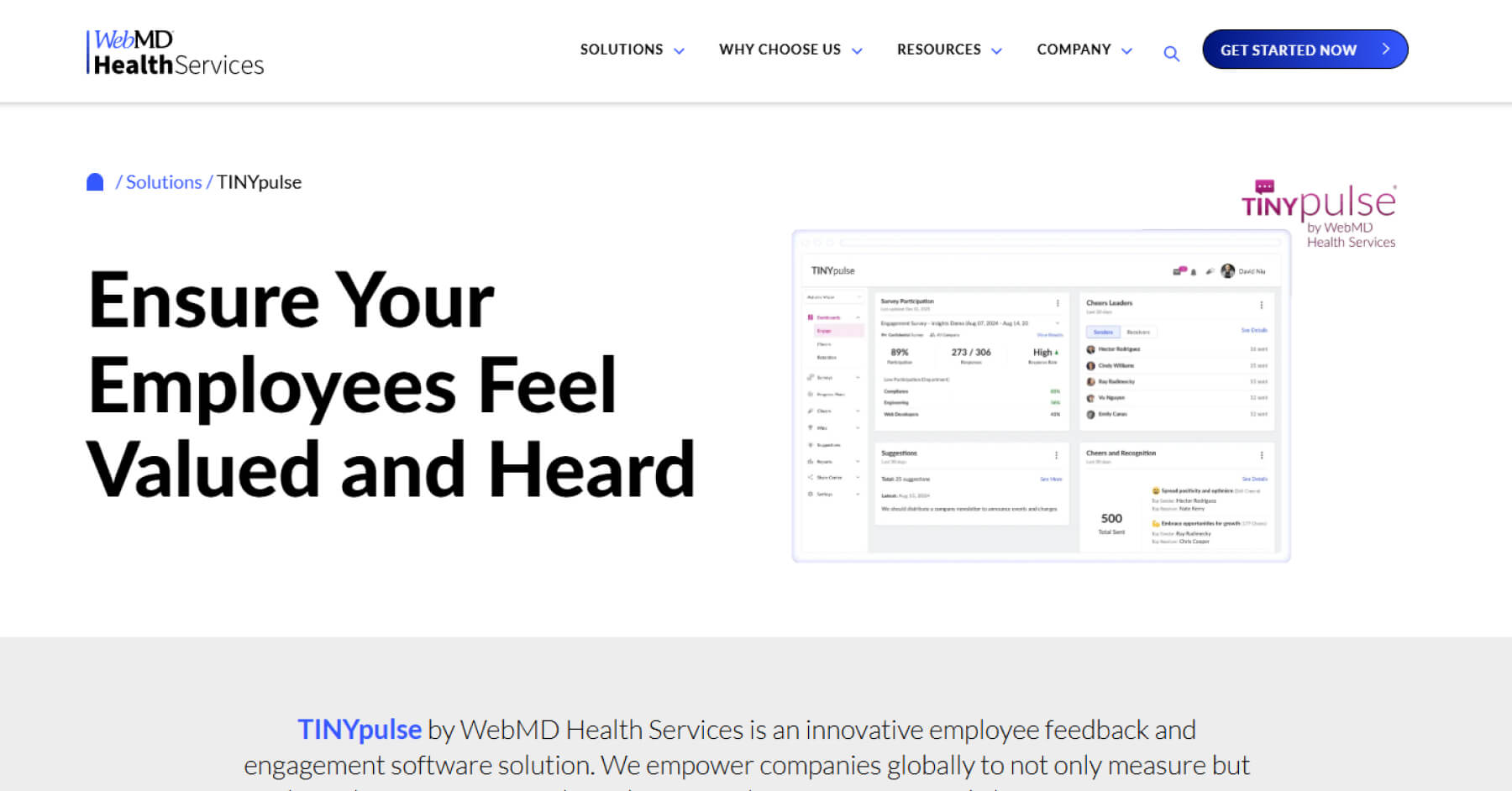
| Feature | Advantages |
|---|---|
| Pulse surveys cadence | Automate weekly or biweekly pulses to track sentiment trends, reduce delays, and react quickly to insights. |
| eNPS question tracking | Measure loyalty with eNPS, trend scores over time, and compare results across safe segments and attributes. |
| Anonymous survey responses | Protect identities with anonymous modes and thresholds, enabling candid feedback while preserving analysis. |
| Templates and audiences | Use built-in templates and target specific audiences to capture focused, comparable feedback across teams. |
| Teams survey notifications | Deliver survey invites and reminders in Microsoft Teams; allow direct responses to raise completion rates. |
Takeaways:
| Takeaway | Details |
|---|---|
| Pricing | Contact sales |
| G2 | 4.4 |
| Capterra | 4.8 |
| Pros | Easy to use and reliable; provides clearer visibility into sentiment, with anonymity encouraging candid feedback. |
| Cons | Pricing is on the higher side. |
7. Glint
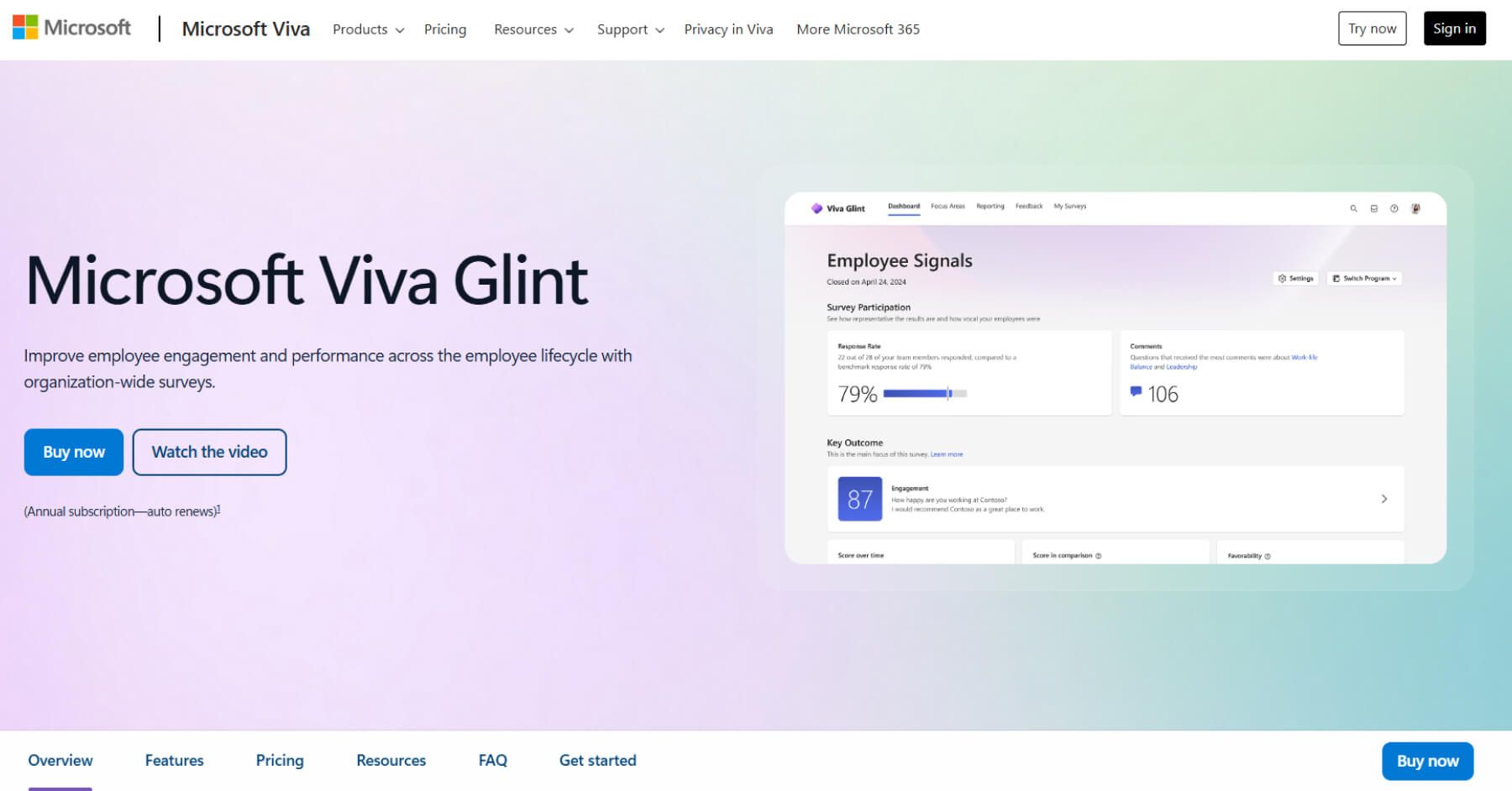
| Feature | Advantages |
|---|---|
| Research-backed questions | Validated items align to benchmarks, enabling consistent comparisons and trusted, research-backed insights. |
| Benchmarks and norms | Compare scores with internal and external benchmarks to contextualize results and set clear targets. |
| Manager insights dashboard | Manager dashboards highlight strengths, risks, and trends with filters for segments, time, and drivers. |
| Response rate trends | A dedicated report tracks response-rate trends and comparisons across hierarchies and demographics. |
| Teams survey notifications | Send invites, reminders, results notifications, and Nudges via Microsoft Teams to lift participation. |
Takeaways:
| Takeaway | Details |
|---|---|
| Pricing | Contact sales |
| G2 | 4.6 |
| Capterra | 4.6 |
| Pros | The platform is easy to use and offers robust analytics options, helping teams uncover patterns and act with clarity. |
| Cons | The breadth of functionality can feel intimidating, sometimes requiring deeper product knowledge or support guidance. |
8. Workvivo
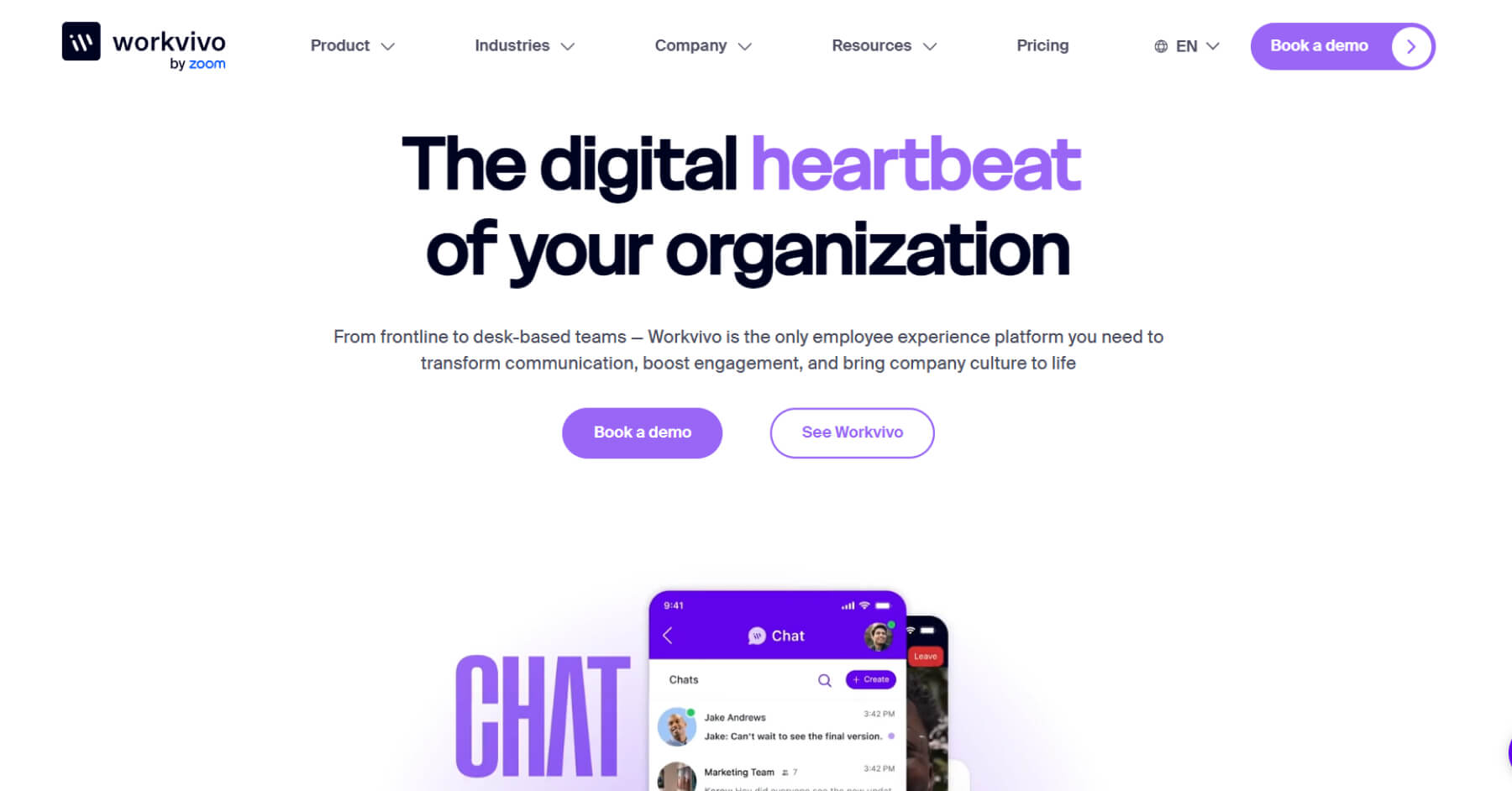
| Feature | Advantages |
|---|---|
| Pulse surveys automation | Automate recurring pulses and track sentiment over time with easy setup and release workflows. |
| Anonymous response safeguards | Run anonymous surveys with aggregated reporting to protect identities while preserving insight. |
| Targeted audiences & spaces | Launch surveys to everyone or to specific teams/spaces so questions reach the most relevant groups. |
| Real-time survey analytics | Monitor active and completed surveys with real-time dashboards for faster analysis and action. |
| Teams app access for surveys | Access Workvivo directly in Microsoft Teams, making surveys reachable without switching apps. |
Takeaways:
| Takeaway | Details |
|---|---|
| Pricing | Contact sales |
| G2 | 4.8 |
| Capterra | 4.7 |
| Pros | Users highlight responsive support and a strong customer experience throughout onboarding and rollout. |
| Cons | Implementation and ongoing maintenance can demand significant effort and coordination. |
9. Lattice
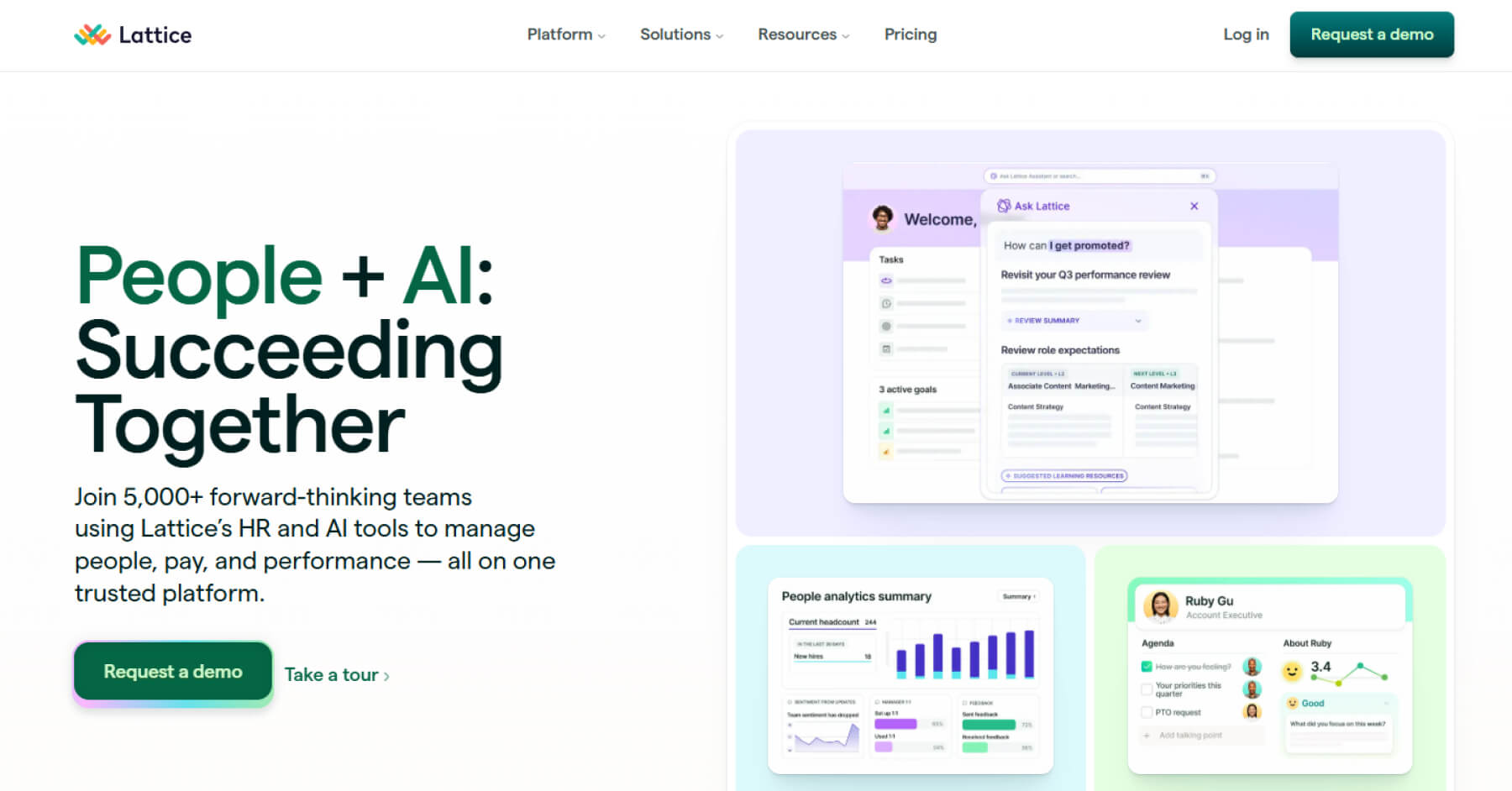
| Feature | Advantages |
|---|---|
| Pulse and eNPS | Run recurring pulses and eNPS to track sentiment shifts and measure impact across segments over time. |
| Strong anonymity options | Choose Basic or Strong anonymity; protect identities and safe groups while preserving useful insights. |
| Benchmarks | Compare results with Lattice and Mercer benchmarks to contextualize scores and set realistic targets. |
| Templates and customization | Use validated question banks or add custom items to tailor surveys to goals, roles, and key moments. |
| Teams survey delivery | Send survey invites and reminders in Microsoft Teams to raise participation without leaving the app. |
Takeaways:
| Takeaway | Details |
|---|---|
| Pricing | Contact sales |
| G2 | 4.7 |
| Capterra | 4.5 |
| Pros | The interface is clean and intuitive, aiding adoption across global audiences; setup remains straightforward. |
| Cons | Account management consistency can vary over time, and users would prefer steadier support continuity. |
10. Trakstar Engage
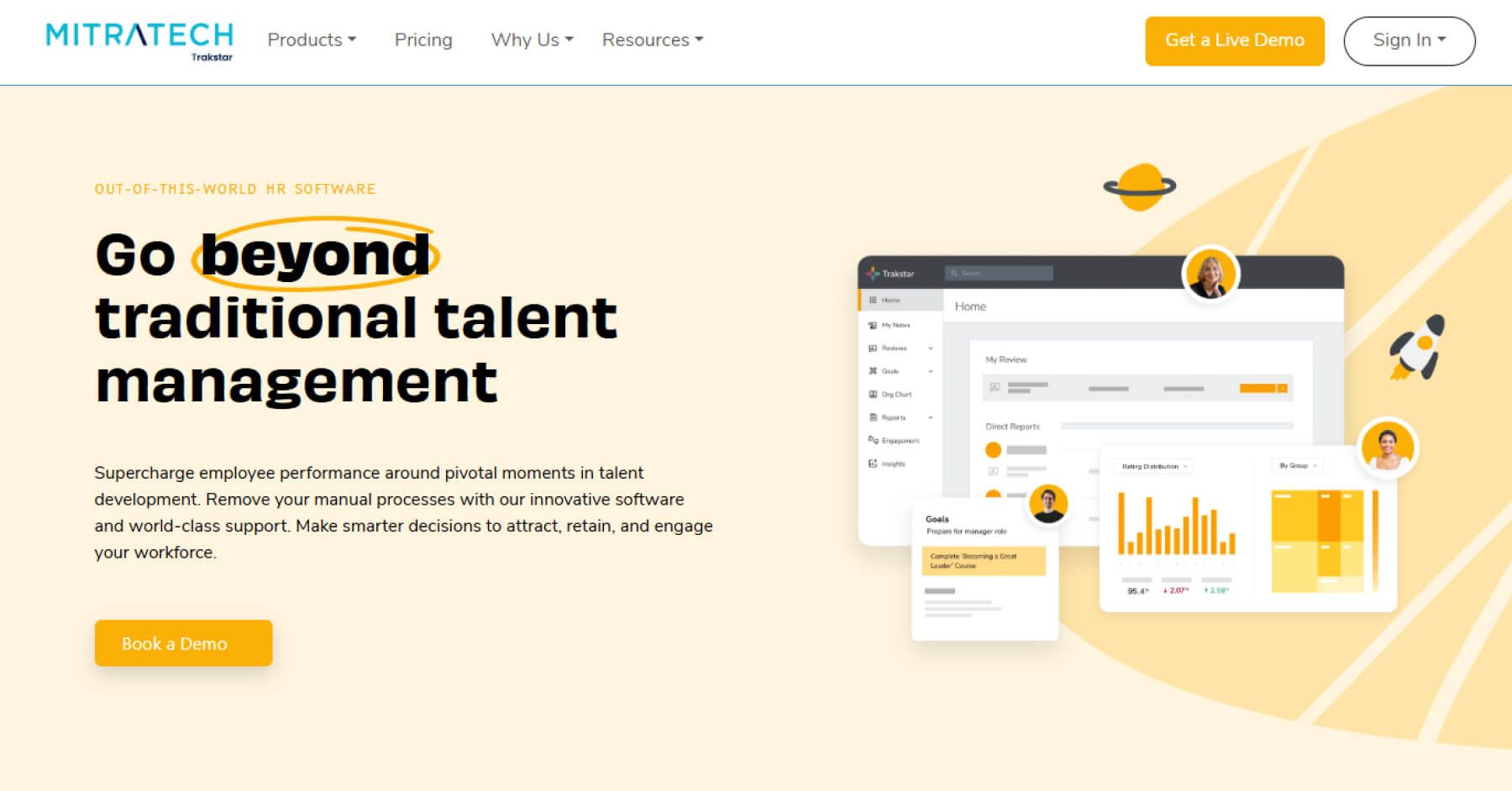
| Feature | Advantages |
|---|---|
| Pulse survey programs | Schedule recurring pulses to track sentiment shifts and surface priorities faster so teams can act decisively. |
| Anonymized data segmentation | Segment and analyze anonymized results by group and time to pinpoint trends without exposing identities. |
| Real-time survey dashboards | View live response rates, scores, and comments on real-time dashboards to move from data to next steps. |
| Custom survey types | Use manager check-ins, opinion polls, and custom surveys to target topics and compare results over time. |
| Teams survey messages | Deliver survey messages via Microsoft Teams to increase participation alongside email-based delivery. |
Takeaways:
| Takeaway | Details |
|---|---|
| Pricing | Contact sales |
| G2 | 4.2 |
| Capterra | 4.4 |
| Pros | Teams report a user-friendly experience for both employees and administrators, simplifying setup and participation. |
| Cons | Survey questions can feel generic, and the resulting insights may be limited without deeper customization. |
What to look for in engagement tools that work with Teams?
Choosing HR software integrated with Teams should feel effortless: employees see surveys where they already collaborate, and admins get secure, high-quality data without extra steps. Prioritize features that turn Teams into a trusted, high-response survey channel, not just another notification feed.
- No data stored in Teams: Survey cards and reminders are sent via Teams, but responses are not captured and stored in Teams.
- Role-based access control: Only authorized admins can configure surveys and view results; managers see aggregated insights.
- Anonymity protections: Optional anonymity thresholds and aggregate reporting prevent identification of individual respondents.
- Compliance by design: CultureMonkey is GDPR-aligned, with encryption in transit/at rest and clear data-retention controls.
- Simple admin control: Microsoft Teams admins can review permissions, monitor usage, and enable/disable the app from the Teams admin center.
How to connect Microsoft Teams + CultureMonkey?
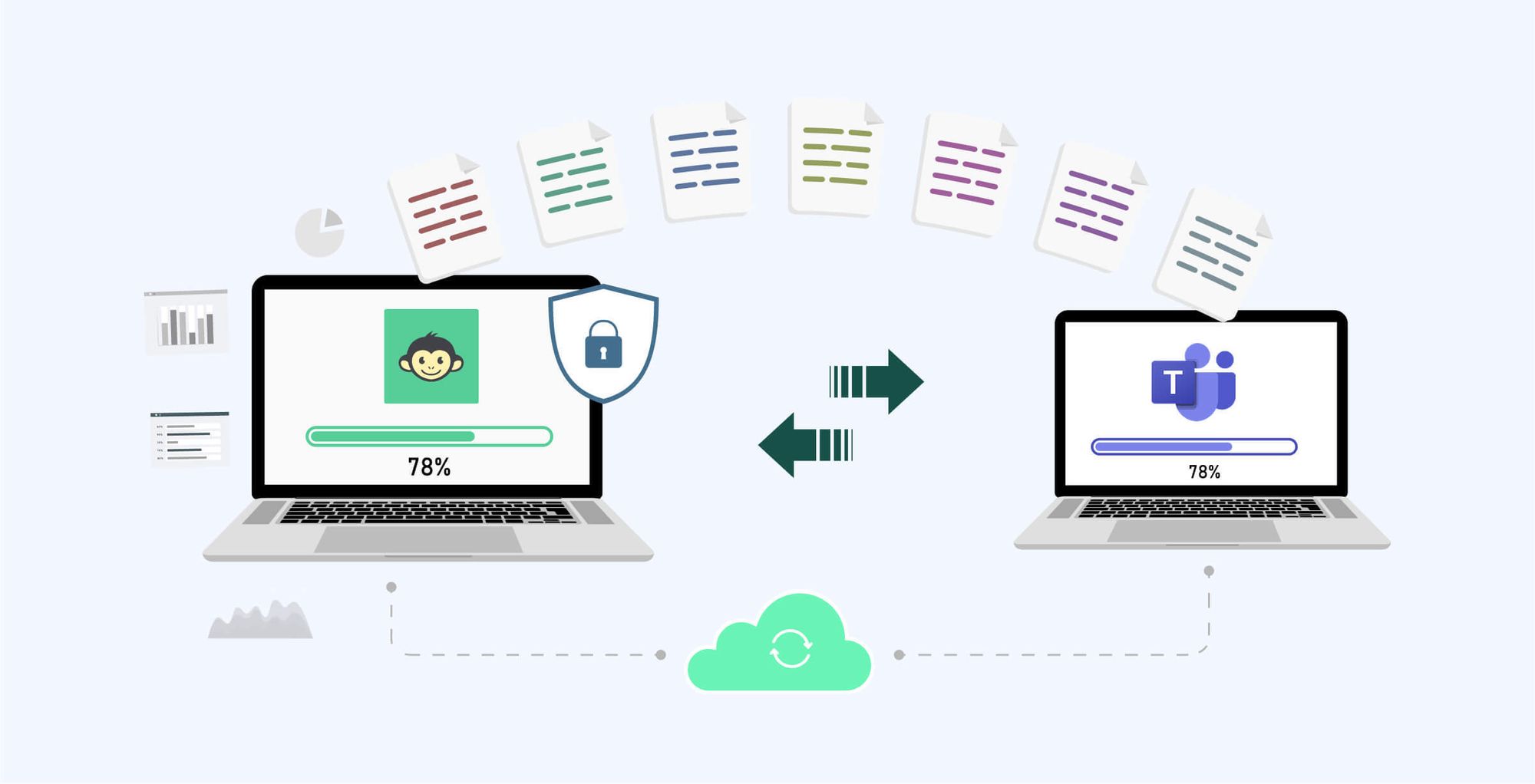
Getting started with the CultureMonkey Microsoft Teams integration is quick and straightforward.
Once connected, Teams becomes a high-response channel to run employee surveys in Microsoft Teams, sending invites and smart reminders right where people collaborate.
- Log in to your CultureMonkey dashboard and open the Channels section. Under Microsoft Teams, click Activate.
- You’ll be redirected to Microsoft’s consent page, choose the correct tenant and click Accept to grant access.
- Only a Admin can approve this step. If you’re not an admin, share the activation link with an admin to complete consent.
- In the Teams admin center, make sure the CultureMonkey app isn’t blocked (Manage apps → search CultureMonkey → unblock if needed).
- Add CultureMonkey to a Setup policy and assign users. Microsoft will install the app for those users and send an automatic welcome message.
- Launch your survey in CultureMonkey. Invites and reminders will now be delivered via Microsoft Teams.
Conclusion
Participation rate is the make-or-break metric for any engagement program; without enough responses, even the best analytics are guesses. The fastest way to lift completion is to remove friction and meet people where they already collaborate.
That’s exactly what CultureMonkey delivers with its Microsoft Teams integration: survey invites and reminders land inside Teams, opening instantly with secure, personalized links. Smart targeting reaches the right audiences, adaptive reminders nudge only non-responders, and mobile-friendly cards make it easy to answer in moments.
Anonymity controls and role-based access build trust, encouraging candid feedback. The result is consistently higher participation, richer signals, and manager-ready insights that turn listening into action, so you can run employee surveys in Microsoft Teams and be confident the data represents your people, not just the loudest few.
FAQ
1. How do I run engagement surveys inside Microsoft Teams?
To run engagement surveys inside Microsoft Teams, use an employee engagement tool that integrates seamlessly with your existing systems. With a platform like CultureMonkey, you can launch surveys, send reminders, and collect feedback directly in Teams, no switching apps required. It ensures high visibility, better participation, and secure data handling, all within the flow of your existing communication environment.
2. Which employee feedback tools integrate with Teams?
Several leading employee feedback tools offer native Microsoft Teams integration. CultureMonkey leads with survey delivery, smart reminders, and analytics built for Teams. Other notable platforms include Leapsome, TINYpulse, Workvivo, and Officevibe (by Workleap), each offering Teams-based features like survey notifications, reminders, and response capture. These tools help drive feedback without disrupting your team’s existing workflow.
3. Can I collect anonymous feedback using Microsoft Teams?
Yes, tools like CultureMonkey let you collect anonymous feedback by sharing secure survey links directly in Microsoft Teams. Employees receive the survey invite as a Teams message and can respond through the link, without needing to leave their workflow. Anonymity settings, encryption, and role-based access ensure that feedback remains confidential while still giving HR teams data-driven insights they can act on.
4. Is Teams a good place to run pulse surveys?
Yes, Microsoft Teams is an effective channel to run pulse surveys, especially when integrated with tools like CultureMonkey. While the survey itself opens in a secure browser, Teams lets you deliver survey links and automated reminders instantly where employees are active. You can use various question types like rating scales, multiple choice, eNPS, and open text, while ensuring higher response rates with minimal disruption.
5. Can survey reminders and alerts be automated in Teams?
Yes, survey tools like CultureMonkey allow you to automate survey reminders and alerts directly in Microsoft Teams. Once a survey is launched, non-respondents can receive timely nudges, helping improve participation without manual follow-ups. These reminders are smart and context-aware, ensuring they're sent only when needed. Combined with AI-driven insights, this setup ensures faster feedback loops and real-time visibility into participation trends.
6. Is Teams-based feedback secure and GDPR compliant?
Yes, when using trusted tools like CultureMonkey, feedback collected via Microsoft Teams remains secure and fully GDPR compliant. Survey links are shared in Teams, but responses are captured through secure, encrypted channels outside the app. With role-based access, data minimization, and privacy thresholds in place, feedback remains anonymous where required. The platform also supports audit trails and DPA agreements to align with global data protection standards.
7. Does CultureMonkey work with Teams for employee engagement?
Yes, CultureMonkey integrates directly with Microsoft Teams to support seamless employee engagement. While surveys are hosted securely outside Teams, you can send survey invites, reminders, and nudges via Teams messages, ensuring higher visibility and completion rates. With smart automation, role-based access, and GDPR compliance, CultureMonkey transforms Teams into a powerful channel for collecting feedback, improving participation, and delivering real-time engagement insights to HR and managers.



